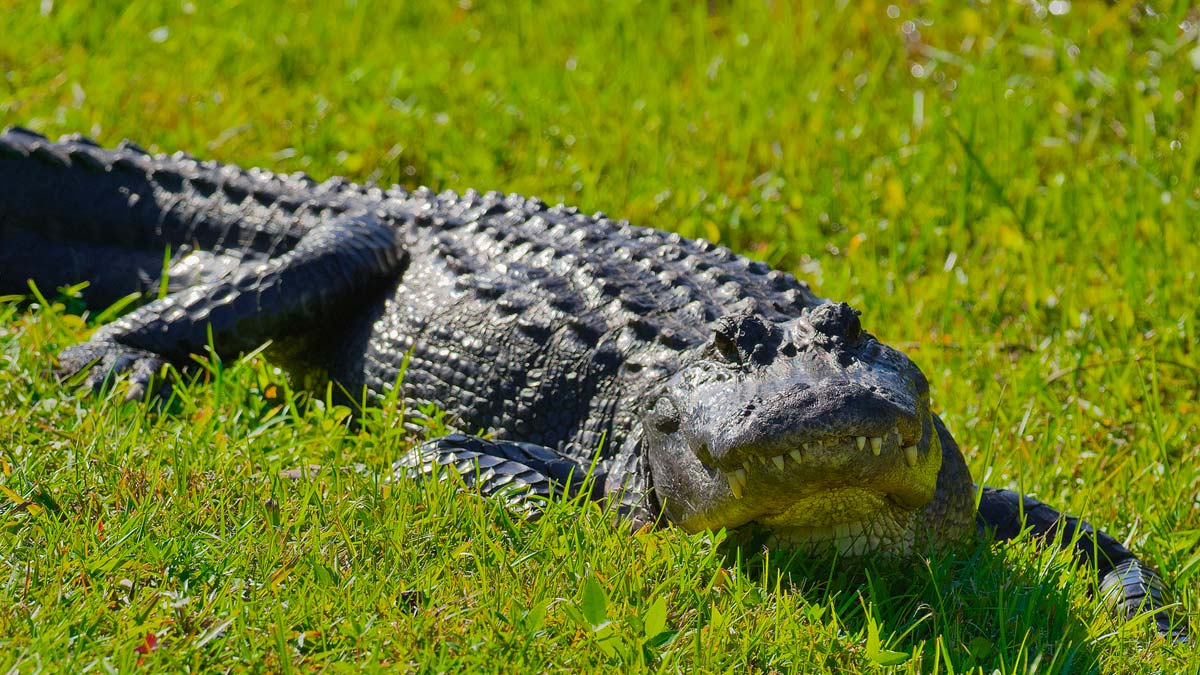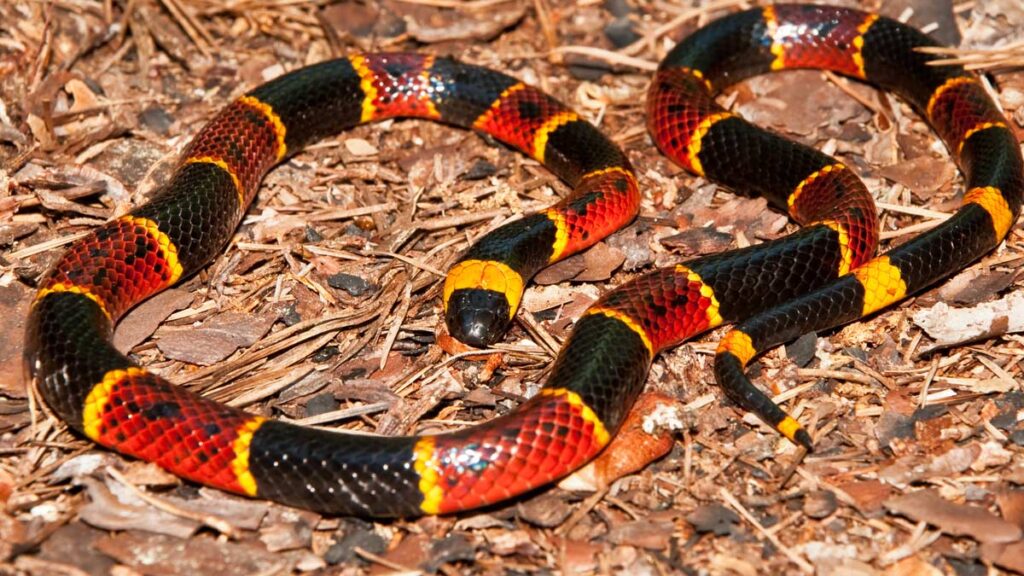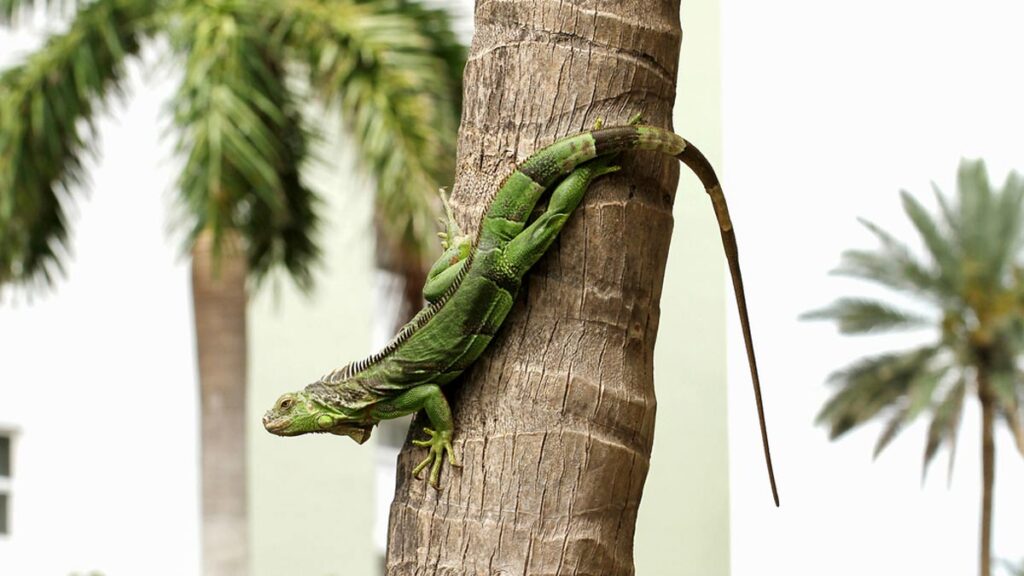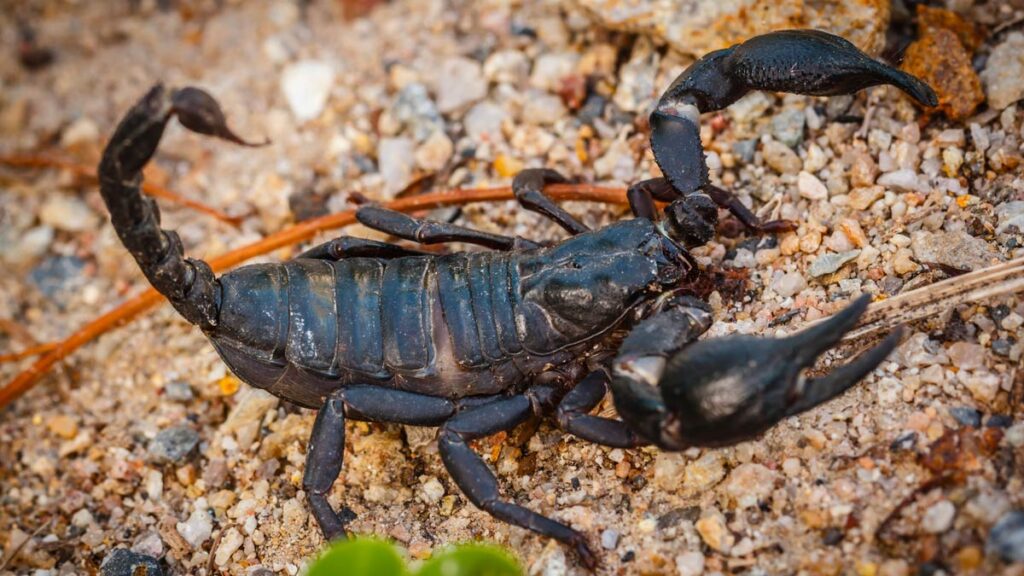
Navigating Alligator Encounters in Florida
Safety Measures for Coexistence and Conflict Avoidance
Updated on: January 2024

With Florida’s picturesque landscapes and abundant water bodies, the state’s alligator population plays a vital role in its ecosystem. However, the allure of these reptiles has led to a rising number of alligator-human conflicts in recent years. Encounters that once remained rare have become more frequent, underscoring the significance of comprehending alligator behavior and practicing caution when in their habitats.
As urban areas expand into alligator territories, clashes between humans and these apex predators have escalated. While alligators naturally exhibit avoidance behavior towards humans, changes in their environment and human actions can alter this dynamic. It’s imperative to recognize that feeding alligators, whether intentional or not, can lead to them associating humans with food sources, thus increasing the risk of dangerous interactions.
To mitigate these conflicts, education about alligator behavior and safety measures becomes paramount. Communities need to familiarize themselves with the signs of alligator presence in their surroundings. Keeping a respectful distance from alligators, refraining from feeding them, and securing pets when near water bodies are crucial steps to reducing potential risks. Understanding the mating and nesting seasons of alligators can further guide residents in being extra cautious during periods of heightened activity. Floridians fostering awareness and adopting responsible behavior around these creatures, can coexist with alligators while minimizing the potential for conflicts that could jeopardize both human safety and the well-being of these essential wetland inhabitants.
Find What You Need
The Dangers of Alligators in Florida
Florida’s picturesque landscapes and abundant water bodies often lead residents and visitors into close proximity with alligators so it is important to know how to approach this situation.
Risks Associated with Alligator Encounters
While these reptiles are generally cautious around humans, there are inherent risks when encountering them. Alligators may perceive humans as threats or competitors, especially if they venture too close to nesting sites or young hatchlings. Such encounters can trigger defensive behaviors, potentially resulting in attacks.
Consequences of Dangerous Interactions
The repercussions of ill-advised interactions with alligators can be severe. Encroaching on an alligator’s territory or attempting to interact with them can lead to serious injuries or fatalities. Instances of alligator attacks highlight the importance of respecting these creatures’ space and behavior. Such incidents not only jeopardize human safety but also fuel negative perceptions about alligators, leading to increased conflicts. Recognizing the potential consequences of dangerous interactions underscores the significance of adhering to safety guidelines, fostering coexistence, and protecting both humans and alligators.
Understanding Alligator Behavior
Alligators are integral components of Florida’s wetland ecosystems, exhibiting distinct behaviors that are essential to their survival.
Natural Behaviors and Tendencies of Alligators
These creatures are cold-blooded, relying on external heat sources to regulate their body temperature. They are also opportunistic predators, preying on a variety of aquatic animals, such as fish, turtles, birds, and smaller mammals. Alligators’ primary hunting method involves lying in wait near water’s edge, using stealth and sudden lunges to catch their prey. During cooler months, they may become less active, seeking out sunny spots for basking.
Dispelling Misconceptions about Alligators
Misconceptions about alligators often arise due to their fearsome appearance and portrayal in popular media. While they are predators, alligators generally avoid human interactions. Unlike some portrayals, they do not actively seek out humans as prey. Additionally, their ability to move quickly on land might lead to the false belief that they are equally agile on solid ground, which is not the case. Dispelling these misconceptions helps people understand the reality of alligator behavior and encourages responsible coexistence with these creatures.
The Takeaway
Understanding alligator behavior, adhering to safety guidelines, and fostering community awareness are pivotal in ensuring a harmonious coexistence with these fascinating creatures, safeguarding both human well-being and the intricate ecosystems of Florida.
Factors Contributing to Conflicts
Urbanization and other human activities have led to alligator habitat loss resulting in humans and alligator populations sharing space.
Impact of Urbanization and Habitat Loss
As Florida’s population continues to grow, urban areas are expanding into alligator habitats. This encroachment not only disrupts the natural balance but also increases the likelihood of human-alligator conflicts. Wetlands, marshes, and other habitats that alligators rely on are being lost to development, forcing these creatures into closer proximity with human settlements. This habitat loss and fragmentation can lead to increased stress on alligator populations, potentially altering their behaviors and interactions with humans.
Human Activities Attracting Alligators to Residential Areas
Certain human activities inadvertently draw alligators closer to residential areas, heightening the risk of conflicts. Improper disposal of food waste near water bodies can attract prey animals, subsequently luring alligators into neighborhoods. Additionally, feeding alligators intentionally, even with good intentions, can alter their natural behavior, making them associate humans with food sources. It’s essential for residents and visitors to understand that these creatures are more likely to approach areas where they perceive easy meals. Being mindful of how human actions can unintentionally encourage alligator presence allows individuals to play a role in minimizing conflicts and fostering safer coexistence.
Alligator-Human Encounters: Prevention and Safety
In the vibrant landscapes of Florida, where alligators and humans share common spaces, ensuring safe and respectful encounters between these two distinct species has become an imperative focus.
Practical Tips for Avoiding Conflicts
Encounters with alligators can be minimized through simple yet effective practices that prioritize safety and respect for these animals’ natural behaviors.
Maintaining a Safe Distance
Keeping a respectful distance from alligators is crucial. Experts recommend a distance of at least 50 feet to reduce the risk of startling or provoking these creatures. Approaching them for photographs or curiosity is unwise and potentially dangerous.
No Feeding of Alligators
It cannot be stressed enough that feeding alligators is a hazardous practice. Not only does it modify their behavior, making them associate humans with food, but it’s also illegal in many places due to the risks it poses.
Handling Pets Around Water
Pets, particularly small dogs and cats, can be mistaken for prey by alligators. When near water bodies, always keep pets on a leash and away from the water’s edge to prevent potential conflicts.
Increased Vigilance During Mating and Nesting Seasons
Alligators are more active during mating and nesting seasons, which typically occur in the spring and early summer. During these times, their behaviors can be more unpredictable. Being extra cautious when near water and avoiding nesting sites helps reduce the likelihood of unwanted encounters.
Adhering to these practical tips helps individuals significantly reduce the chances of conflicts with alligators while also fostering a safer environment for both humans and these remarkable reptiles.
Alligator Habitats and Warning Signs
Respecting alligator warning signs and staying informed about local guidelines allows individuals to better navigate alligator habitats while minimizing conflicts and promoting safety.
Environments Where Alligators Are Commonly Found
Alligators are well-adapted to various aquatic habitats and can be encountered in a range of environments across Florida. They are often found in freshwater areas such as lakes, rivers, swamps, and marshes. Additionally, alligators may inhabit brackish waters, which are a mix of saltwater and freshwater, particularly in coastal regions. They’re proficient swimmers and can also inhabit canals, ditches, and ponds. Understanding these habitats can help individuals be more cautious when venturing into these areas.
Importance of Heeding Warning Signs Near Water Bodies
Local authorities and wildlife agencies play a critical role in informing the public about potential alligator habitats. When visiting areas known to be inhabited by alligators, it’s essential to pay close attention to warning signs posted by authorities. These signs are placed strategically to indicate areas with potential alligator presence and serve as a reminder to exercise caution. Ignoring such warnings can increase the risk of dangerous encounters.
Educating the Community
Parents and schools have an extremely important role in educating children about alligators.
Parental Role in Educating Children About Alligator Safety
Parents play a crucial role in imparting knowledge about alligator safety to their children. Teaching children to recognize potential alligator habitats, emphasizing the importance of maintaining a safe distance, and explaining why feeding alligators is dangerous can help instill a culture of responsible coexistence from a young age. Parents can foster a sense of respect and understanding for wildlife, to ensure the safety of both children and alligators.
Involvement of Schools and Community Organizations
Schools and community organizations have a unique opportunity to raise awareness about alligator safety on a broader scale. Incorporating educational programs or workshops that cover alligator behavior, risks, and preventive measures can empower individuals with valuable knowledge. Events or seminars hosted by local wildlife experts can serve as platforms for sharing insights about coexisting with alligators while minimizing conflicts. These educational initiatives help foster a more informed and safety-conscious community, reducing the likelihood of harmful encounters and promoting harmonious interaction between humans and alligators.
Legal and Environmental Aspects
By safeguarding alligator populations, we contribute to the overall health of Florida’s unique and vital wetland ecosystems.
Florida Laws and Regulations Regarding Alligator Interactions
Florida has specific laws and regulations in place to manage interactions with alligators, aiming to protect both human safety and the well-being of these creatures. It is illegal to feed alligators, as this behavior can lead to altered behavior and increased conflicts. Additionally, there are laws against harassing or disturbing alligators, as well as regulations governing their hunting and handling. Familiarizing oneself with these laws and adhering to them is essential for maintaining a safe and respectful coexistence with alligators.
Ecological Significance of Alligators in Wetland Ecosystems
Alligators play a crucial role in maintaining the health and balance of Florida’s wetland ecosystems. As apex predators, they help regulate populations of prey species, preventing overpopulation and maintaining the biodiversity of these environments. Their burrowing activities create small ponds that benefit other wildlife during dry periods. Furthermore, alligator nests provide shelter and habitat for various animals. Recognizing their ecological significance underscores the importance of preserving their habitats and taking measures to prevent conflicts.
Collaboration with Authorities
In a concerted effort to manage the delicate balance between human populations and alligator habitats, collaborative initiatives with local authorities have emerged as pivotal strategies for minimizing potential conflicts.
Efforts of the Florida Fish and Wildlife Conservation Commission
The Florida Fish and Wildlife Conservation Commission (FWC) plays a pivotal role in managing alligator-human conflicts and ensuring the safety of both residents and wildlife. The FWC monitors alligator populations, conducts research to better understand alligator behavior, and provides guidelines for coexisting with these creatures. They offer educational resources to the public, empowering individuals to make informed decisions when in alligator habitats. The FWC also collaborates with local law enforcement agencies to address alligator-related incidents and enforce regulations.
Management of Problematic Alligators and Relocations
In cases where alligators exhibit problematic behavior, such as approaching human-populated areas, the FWC employs strategies to manage these situations. They may capture and relocate alligators that pose a threat to public safety or relocate them to more suitable habitats. However, relocation is not always a straightforward solution, as alligators have strong homing instincts and may return to their original locations. The FWC’s expertise in assessing alligator behavior and determining appropriate actions helps mitigate potential conflicts and promote coexistence.
Success Stories and Best Practices
Amidst the challenges of coexisting with alligators in Florida’s diverse ecosystems, success stories and best practices stand as beacons of hope, showcasing how communities can effectively manage conflicts and promote responsible interaction.
Communities Effectively Managing Alligator Conflicts
Across Florida, communities have taken proactive steps to manage alligator conflicts successfully. By implementing comprehensive educational campaigns, they’ve raised awareness about alligator behavior, safety guidelines, and the importance of reporting concerning sightings. Some communities have established designated alligator response teams, comprised of experts who assess situations and make informed decisions regarding alligator management. These collaborative efforts have led to a reduction in conflicts, showcasing the positive impact of community engagement.
Initiatives Minimizing Potential Dangers
Several initiatives have been instrumental in minimizing potential dangers associated with alligator encounters. One notable approach involves utilizing technology, such as mapping software, to identify alligator habitats and areas with higher risks of conflicts. Public education campaigns, workshops, and informational materials distributed by local authorities and wildlife organizations have also proven effective in promoting responsible behavior around alligators. Furthermore, enforcing stricter penalties for feeding or harassing alligators has acted as a deterrent, discouraging actions that could lead to dangerous interactions. These initiatives collectively contribute to safer coexistence between humans and alligators in Florida’s diverse landscapes.
Steps to Take During Unexpected Alligator Encounters
Encountering an alligator unexpectedly requires a composed and cautious approach.
These steps can help individuals navigate such situations safely:
Maintaining a Safe Distance – If you spot an alligator, keep a considerable distance, ideally at least 50 feet, to minimize the risk of provoking it. Remember that alligators can move surprisingly fast in short bursts.
Calmly Backing Away – Slowly and steadily retreat from the alligator without making sudden movements. Avoid turning your back on the alligator and maintain eye contact as you gradually distance yourself.
Reporting Concerning Behavior to Local Authorities – If you observe an alligator displaying unusual or aggressive behavior, such as approaching humans or lingering in populated areas, report it to local wildlife authorities or law enforcement. They have the expertise to assess the situation and take appropriate action if needed.
Following these steps can significantly reduce the likelihood of escalating an encounter into a conflict and ensure both your safety and the well-being of the alligator.
Conclusion
Throughout this exploration of alligator dangers in Florida and strategies for conflict avoidance, several crucial themes have emerged. Understanding alligator behavior, recognizing potential risks, and adopting preventive measures are fundamental components of safe coexistence. The responsibility of preventing alligator conflicts extends beyond individual actions. As informed citizens, we can foster safer communities by sharing knowledge about alligator behavior and safety practices. By spreading awareness through schools, local organizations, and social networks, we can collectively contribute to an environment where humans and alligators coexist harmoniously, benefiting both wildlife and our communities. In the face of Florida’s unique ecological challenges, respecting alligators’ natural behaviors and taking proactive steps toward conflict prevention are essential for maintaining the delicate balance between humans and wildlife.





